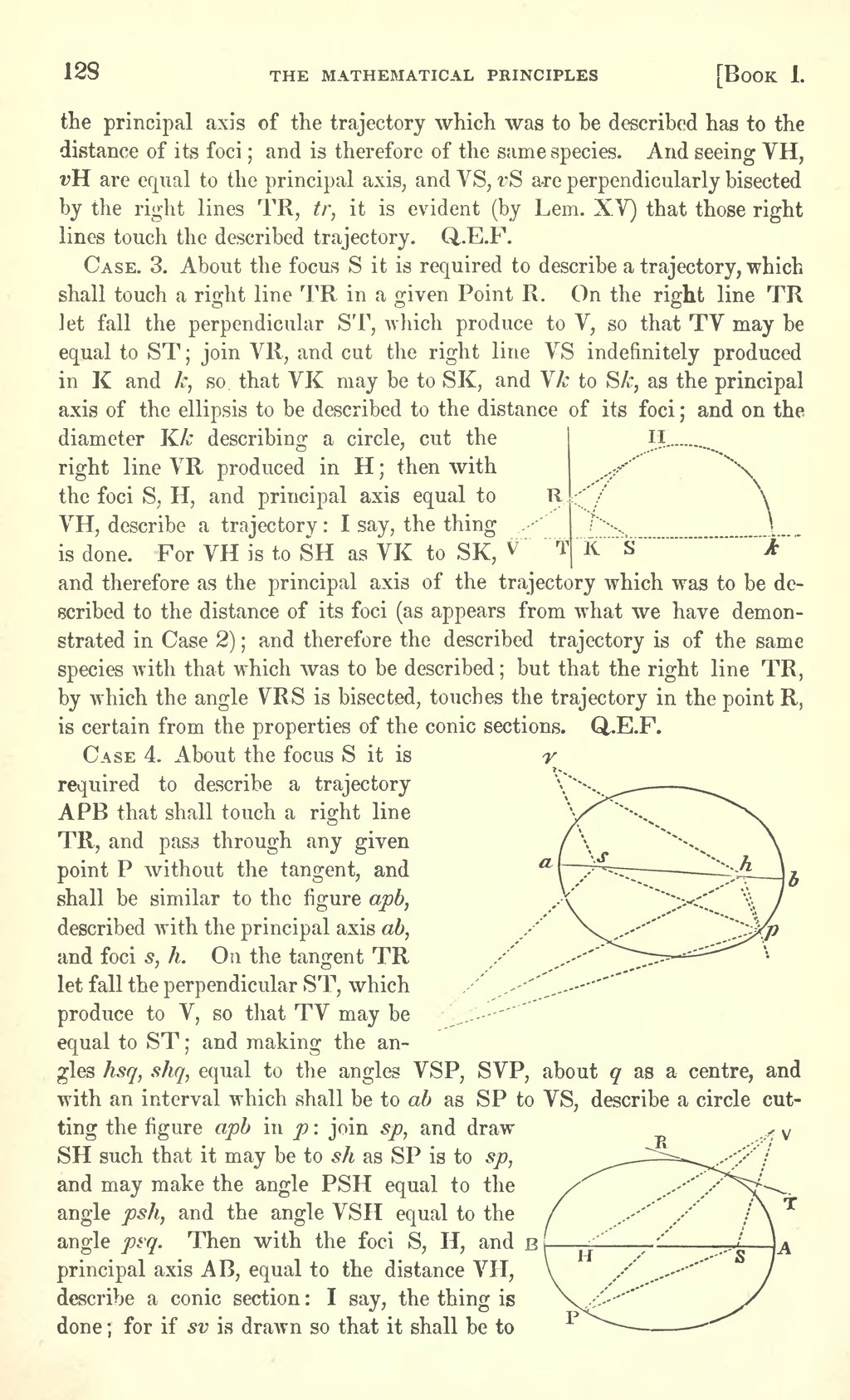the principal axis of the trajectory which was to be described has to the distance of its foci; and is therefore of the same species. And seeing VH, vH are equal to the principal axis, and VS, vS are perpendicularly bisected by the right lines TR, tr, it is evident (by Lem. XV) that those right lines touch the described trajectory. Q.E.F.

Case. 3. About the focus S it is required to describe a trajectory, which shall touch a right line TR in a given Point R. On the right line TR let fall the perpendicular ST, which produce to V, so that TV may be equal to ST; join VR, and cut the right line VS indefinitely produced in K and k, so that VK may be to SK, and Vk to Sk, as the principal axis of the ellipsis to be described to the distance of its foci; and on the diameter Kk describing a circle, cut the right line VR produced in H; then with the foci S, H, and principal axis equal to VH, describe a trajectory: I say, the thing is done. For VH is to SH as VK to SK, and therefore as the principal axis of the trajectory which was to be described to the distance of its foci (as appears from what we have demonstrated in Case 2); and therefore the described trajectory is of the same species with that which was to be described; but that the right line TR, by which the angle VRS is bisected, touches the trajectory in the point R, is certain from the properties of the conic sections. Q.E.F.

Case 4. About the focus S it is required to describe a trajectory APB that shall touch a right line TR, and pass through any given point P without the tangent, and shall be similar to the figure apb, described with the principal axis ab, and foci s, h. On the tangent TR let fall the perpendicular ST, which produce to V, so that TV may be equal to ST; and making the angles hsq, shq, equal to the angles VSP, SVP, about q as a centre, and with an interval which shall be to ab as SP to VS, describe a circle cutting the figure apb in p:  join sp, and draw SH such that it may be to sh as SP is to sp, and may make the angle PSH equal to the angle psh, and the angle VSH equal to the angle psq. Then with the foci S, H, and principal axis AB, equal to the distance VH, describe a conic section: I say, the thing is done; for if sv is drawn so that it shall be to
join sp, and draw SH such that it may be to sh as SP is to sp, and may make the angle PSH equal to the angle psh, and the angle VSH equal to the angle psq. Then with the foci S, H, and principal axis AB, equal to the distance VH, describe a conic section: I say, the thing is done; for if sv is drawn so that it shall be to
